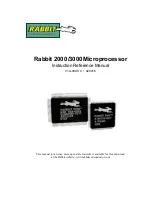
RF-BM-BG22A3(I)
Shenzhen RF-star Technology Co., Ltd.
Page 20 of 26
5.5 Basic Operation of Hardware Design
1.
It is recommended to offer the module a DC stabilized power supply, a tiny power supply ripple coefficient, and
reliable ground. Please pay attention to the correct connection between the positive and negative poles of the power
supply. Otherwise, the reverse connection may cause permanent damage to the module;
2.
Please ensure the supply voltage is between the recommended values. The module will be permanently damaged
if the voltage exceeds the maximum value. Please ensure a stable power supply and no frequently fluctuating
voltage.
3.
When designing the power supply circuit for the module, it is recommended to reserve more than 30% of the margin,
which is beneficial to the long-term stable operation of the whole machine. The module should be far away from the
power electromagnetic, transformer, high-frequency wiring, and other parts with large electromagnetic interference.
4.
The bottom of the module should avoid high-frequency digital routing, high-frequency analog routing, and power
routing. If it has to route the wire on the bottom of the module, for example, it is assumed that the module is soldered
to the Top Layer,
the copper must be spread on the connection part of the top layer and the module, and be close
to the digital part of the module and routed in the Bottom Layer (all copper is well-grounded).
5.
Assuming that the module is soldered or placed in the Top Layer, it is also wrong to randomly route the Bottom Layer
or other layers, which will affect the spurs and receiving sensitivity of the module to some degree;
6.
Assuming that there are devices with large electromagnetic interference around the module, which will greatly affect
the module performance. It is recommended to stay away from the module according to the strength of the
interference. If circumstances permit, appropriate isolation and shielding can be done.
7.
Assuming that there are routings of large electromagnetic interference around the module (high-frequency digital,
high-frequency analog, power routings), which will also greatly affect the module performance. It is recommended
to stay away from the module according to the strength of the interference. If circumstances permit, appropriate
isolation and shielding can be done.
8.
It is recommended to stay away from the devices whose TTL protocol is the same 2.4 GHz physical layer, for
example, USB 3.0.
5.6 Trouble Shooting
5.6.1 Unsatisfactory Transmission Distance
1.
When there is a linear communication obstacle, the communication distance will be correspondingly weakened.
Temperature, humidity, and co-channel interference will lead to an increase in the communication packet loss rate.
The performances of ground absorption and reflection of radio waves will be poor when the module is tested close
to the ground.
2.
Seawater has a strong ability to absorb radio waves, so the test results by the seaside are poor.
3.
The signal attenuation will be very obvious if there is metal near the antenna or if the module is placed inside the







































